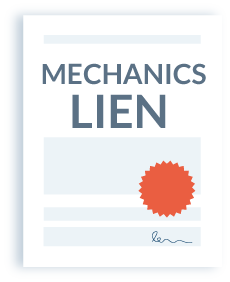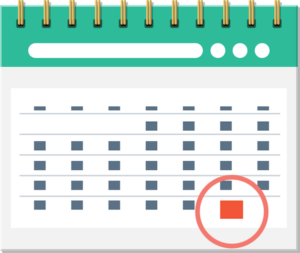
Mechanics lien can work in many different ways to get you paid, but the most important thing to remember is that they’re very effective at prompting payment. Simply put: mechanics liens work. By giving the claimant an interest in the improved property itself, the mechanics lien empowers construction participants to recover the money they’ve rightfully earned.
If you have decided to file a mechanics lien in Idaho, this step-by-step guide (starting in the next paragraph, below) will tell you how. It’s important to keep in mind that there may be preliminary notice and timing requirements that must be met before filing a valid Idaho mechanics lien. It can be a complicated, time consuming, and very challenging task to file a mechanics lien by yourself, but if you want to go it alone and you’re ready to file, just follow the steps below to start the lien process.
Step 1. Prepare the Idaho mechanics lien form
It is important to make sure that your Idaho mechanics lien contains the information required by statute and conforms with the formal requirements regarding signature. If you do not include the proper information or fail to comply with the statutory requirements for signing the lien, your lien can be determined invalid.
A. Where can I get an Idaho mechanics lien form?
Mechanics liens are relatively simple documents that have some very strict requirements. Before starting the entire mechanics lien process, you want to be sure that you’re using the right form. There are a lot of resources out there that claim to have valid forms available, but there’s no telling if the document is accurate or even valid.
Download a free, Idaho Mechanics Lien Form
Levelset’s forms are created and reviewed by construction attorneys and payment experts; thousands of Idaho contractors and suppliers have successfully used this form to get paid.
B. How to fill out your Idaho mechanics lien form
An Idaho mechanics lien must contain the following information:
1. Claimant’s information
Let’s start with the easiest section, your information. This seems pretty basic, but you’d be surprised how many times this can get messed up. Be sure to use your full name and address. If you are filing on behalf of a corporation or LLC, be sure to use the entire business name that is registered with the Secretary of the State office.
2. Statement of the demand
As for the amount of money that the lien is intended to cover, do not get carried away with this section. Exaggerating your lien claim can lead to invalidation, not to mention potential penalties as well. The amount should be the reasonable value of the labor or materials provided to the project, minus any offsets. Do not attempt to include attorney’s fees, interest, or any consequential damages in this amount.
3. Owner information
Another easy one if the property owner’s information is readily available. If not, this may prove slightly more difficult. Especially if there is more than one owner, transfer of the property mid-way through the project, or any number of situations that can arise. You need to be sure you get this section filled out right. Here’s a helpful article to get you started: How to Find the Property Owner on a Construction Project.
4. Hiring party
The statute requires “the name of the person by whom he was employed or to whom he furnished materials.” This is a long-winded way of saying the client, or the person who hired you. You should already have this information as it’s most likely in the contract documents.
5. Property description
Idaho statutes require that the mechanics lien contain a description of the property that is “sufficient for identification.” That’s not a lot to go on. One thing to note is that t doesn’t require a full, legal description of the property. But merely adding the street address will most likely not suffice either. So the best practice is to include as much information as possible. There is not a penalty for “too much information.” This should point you in the right direction: Researching the Legal Property Description.
6. First & last dates of furnishing
These are the first and last days that you provided on the project itself. Whether it be labor, materials, services, or equipment. This is the first and last dates that you personally provided something to the improvement.
7. Signature & notarization
Before you sign your mechanics lien claim, be sure that you do so in front of a notary. A claim that isn’t notarized will not be accepted by the county recorder.
Additionally, Idaho law requires that the lien claim must be “verified by the oath of the claimant, his agent or attorney, to the effect that the affiant believes the same to be just.” This is an interesting requirement in that, unlike some other states with a specific verification under oath requirement, Idaho does not require the affiant to declare under the penalty of perjury that the statement in the claim is actually true (which they absolutely should be), but rather that the claim is just.
Step 2. File the lien with the county recorder’s office
Now that the mechanics lien claim is properly filled out, it’s time to plan for the filing process.
 A. How long do you have to file an Idaho mechanics lien?
A. How long do you have to file an Idaho mechanics lien?
Idaho mechanics lien law requires that all lien claimants file their claim within 90 days of the date they last supplied labor or materials to the project.
In some circumstances, this deadline can be extended if you provide additional labor or materials to the project (such as remedying a defect). However, simple or “trivial” work or materials provided, such as punchlist work, will not extend the deadline.
B. Which Idaho county office records mechanics liens?
To perfect an Idaho mechanics line, the form must be filed in the county recorder’s office where the property is located. If the property spans more than one county, file in both. Each county has its own set of rules and requirements that must be met. It’s always a good idea to contact the office ahead of time, to be sure that you know what to expect. Here are a few Essential Questions to Ask the County Recorder.
To make this process a bit easier on you, we’ve put together a list of all the Idaho county recorder’s offices, along with links to their websites here:
C. Practical filing tips
The lien may be delivered to the proper county recorder via mail, FedEx, or walked in to be recorded (either personally or via courier). The original, notarized copy should be sent to the office. Be sure that you have the proper recording fees when you mail or walk in your claim. Liens are often rejected for improper fees (even if you provide too much money). Any delay caused by needing to resubmit the lien for recording can result in a missed deadline- so it’s best practice to make sure you have the proper fees the first time. Additionally, include or bring a self-addressed, stamped envelope with return instructions to receive a copy of the recorded lien for your records.
Some counties in Idaho allow for documents to be recorded electronically. If you wish to do that, you will likely need to register with an electronic filing service, and you will need to scan your lien claim so it can be electronically submitted,
Step 3. Deliver your lien to the property owner
Idaho requires that a “true and correct copy” of the lien must be served on the property owner within 5 days of filing the claim. This is a very tight time frame, so if you are mailing your lien claim to the county for filing, and providing a self-addressed stamped envelope for return of a copy of the recorded lien, it is likely best practice to serve a copy of the lien at the same time you send the lien for recording.
Idaho requires the copy of the lien to be served on the owner or reputed owner either by delivering the copy personally or by mailing the copy by certified mail to the owner or reputed owner at his last known address. Failure to properly serve the certificate of lien within the 5-day statutory deadline can invalidate the lien claim – and since this is a very tight window, it pays to be prepared.
Once the lien document has been both filed and served on the owner – your Idaho mechanics lien is ready to get you paid what you’ve earned. While this is a powerful tool to get you paid, this may not be the end of the road – it is still possible for the lien to be challenged, or even determined invalid.
What you need to know & do after you file your Idaho mechanics lien
An Idaho mechanics lien generally stays effective for 6 months from the date on which it was recorded. If no action is taken before the deadline passes, then the lien claim will expire and be unenforceable.
A. Extend your Idaho mechanics lien
In Idaho, that period to enforce the lien claim may be extended by “payment on account” or “an extension of credit given with expiration date thereof” provided that “such payment or credit and expiration date, is endorsed on the record of the lien.” This extension allows the lien to be enforced within 6 months after the date of such payment or extension.
Here’s an interesting scenario in our Ask an Expert Center that breaks down the extension process: Can an Idaho mechanics lien be extended more than once if the contractor has received more payments?
B. Foreclose on the lien/enforce your lien
If payment is never made, you may be forced to enforce your lien claim through a foreclosure action. Remember that just because a lien is recorded doesn’t necessarily make it valid, and likewise, just because a property owner (or their attorney) may make a claim that it is improper and needs to be removed doesn’t make it invalid.
Keep in mind, though, that foreclosure is a full legal action, which can cost both time and money. Consider how much money is in dispute, to determine whether Foreclosure is Worth It? There is, however, one more step you can take to try an induce payment, it’s known as a Notice of Intent to Lien. This is like a final warning demand letter, stating that if payment is received in x amount of days, then you are willing and able to take legal action to foreclose the claim.
Download a free, Idaho Notice of Intent to Lien Form
C. Release (or cancel) the lien
If you’ve been paid, congratulations! There may be one extra step that needs to be taken. Although, there is no specific legal requirement to remove the lien claim after payment has been made, once the debt has been paid, it’s good practice to go ahead and file a release form to cancel the claim. Eventually, the owner will be asking you to do so anyway.
Additional Idaho resources
- Idaho Construction Payment Help Hub
- Blog posts on Idaho construction payment topics
- Ask a legal or payment expert an Idaho construction payment question





 A. How long do you have to file an Idaho mechanics lien?
A. How long do you have to file an Idaho mechanics lien?